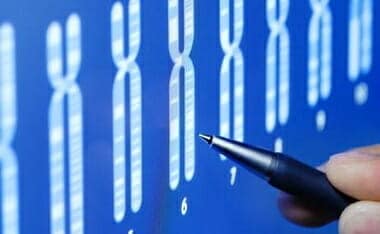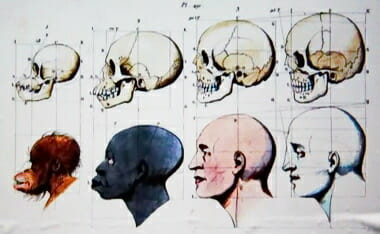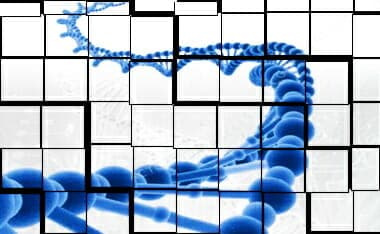- MINA, “Scientists see the obvious, confirm Darwinism is Broken,” Dec. 14, 2016
Darwinian theory is broken and may not be fixable. That was the takeaway from a meeting last month organized by the world’s most distinguished and historic scientific organization, which went mostly unreported by the media.
The three-day conference at the Royal Society in London was remarkable in confirming something that advocates of intelligent design (ID), a controversial scientific alternative to evolution, have said for years. ID proponents point to a chasm that divides how evolution and its evidence are presented to the public, and how scientists themselves discuss it behind closed doors and in technical publications. This chasm has been well hidden from laypeople, yet it was clear to anyone who attended the Royal Society conference, as did a number of ID-friendly scientists.
[….]
The opening presentation at the Royal Society by one of those world-class biologists, Austrian evolutionary theorist Gerd Müller, underscored exactly Meyer’s contention. Dr. Müller opened the meeting by discussing several of the fundamental “explanatory deficits” of “the modern synthesis,” that is, textbook neo-Darwinian theory. According to Müller, the as yet unsolved problems include those of explaining:
-Phenotypic complexity (the origin of eyes, ears, body plans, i.e., the anatomical and structural features of living creatures);
-Phenotypic novelty, i.e., the origin of new forms throughout the history of life (for example, the mammalian radiation some 66 million years ago, in which the major orders of mammals, such as cetaceans, bats, carnivores, enter the fossil record, or even more dramatically, the Cambrian explosion, with most animal body plans appearing more or less without antecedents); and finally
-Non-gradual forms or modes of transition, where you see abrupt discontinuities in the fossil record between different types.
As Müller has explained in a 2003 work (“On the Origin of Organismal Form,” with Stuart Newman), although “the neo-Darwinian paradigm still represents the central explanatory framework of evolution, as represented by recent textbooks” it “has no theory of the generative.” In other words, the neo-Darwinian mechanism of mutation and natural selection lacks the creative power to generate the novel anatomical traits and forms of life that have arisen during the history of life. Yet, as Müller noted, neo-Darwinian theory continues to be presented to the public via textbooks as the canonical understanding of how new living forms arose – reflecting precisely the tension between the perceived and actual status of the theory that Meyer described in “Darwin’s Doubt.”
Much of the conference after Müller’s talk did discuss various other proposed evolutionary mechanisms. Indeed, the prime movers in the Royal Society event, Müller, James Shapiro, Denis Noble, and Eva Jablonka – known to evolutionary biologists as the “Third Way of Evolution” crowd, neither ID theorists nor orthodox Darwinists – have proposed repairing the explanatory deficits of the modern synthesis by highlighting evolutionary mechanisms other than random mutation and natural selection. Much debate at the conference centered around the question of whether these new mechanisms could be incorporated into the basic population genetics framework of neo-Darwinism, thus making possible a new “extended” evolutionary synthesis, or whether the emphasis on new mechanisms of evolutionary change represented a radical, and theoretically incommensurable, break with established theory. This largely semantic, or classificatory, issue obscured a deeper question that few, if any, of the presentations confronted head on: the issue of the origin of genuine phenotypic novelty – the problem that Müller described in his opening talk.
Indeed, by the end of Day 3 of the meeting, it seemed clear to many of our scientists, and others in attendance with whom they talked, that the puzzle of life’s novelties remained unsolved – if, indeed, it had been addressed at all. As a prominent German paleontologist in the crowd concluded, “All elements of the Extended Synthesis [as discussed at the conference] fail to offer adequate explanations for the crucial explanatory deficits of the Modern Synthesis (aka neo-Darwinism) that were explicitly highlighted in the first talk of the meeting by Gerd Müller.”
[….]
Rather, these complex behaviors were taken as givens, leaving the critical question of their origins more or less untouched. While there is abundant evidence that animals can learn and transmit new behaviors to their offspring – crows in Japan, for instance, have learned how to use automobile traffic to crack open nuts – all such evidence presupposes the prior existence of specific functional capacities enabling observation, learning, and the like. The evolutionary accounts of niche construction theory therefore collide repeatedly with a brick wall marked “ORIGINAL COMPLEX FUNCTIONAL CAPACITY REQUIRED HERE” – without, or beyond which, there would simply be nothing interesting to observe.James Shapiro’s talk, clearly one of the most interesting of the conference, highlighted this difficulty in its most fundamental form. Shapiro presented fascinating evidence showing, contra neo-Darwinism, the non-random nature of many mutational processes – processes that allow organisms to respond to various environmental challenges or stresses. The evidence he presented suggests that many organisms possess a kind of pre-programmed adaptive capacity – a capacity that Shapiro has elsewhere described as operating under “algorithmic control.” Yet, neither Shapiro, nor anyone else at the conference, attempted to explain how the information inherent in such algorithmic control or pre-programmed capacity might have originated. …



